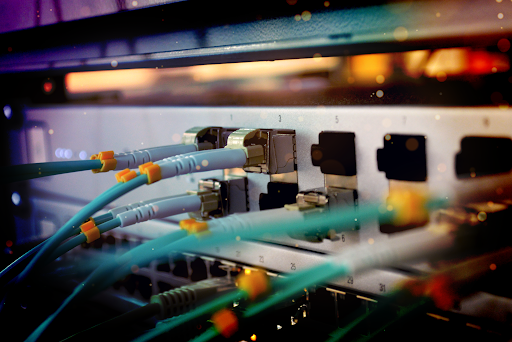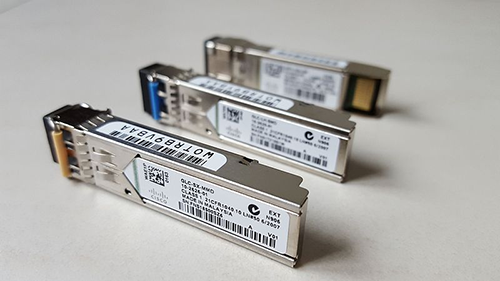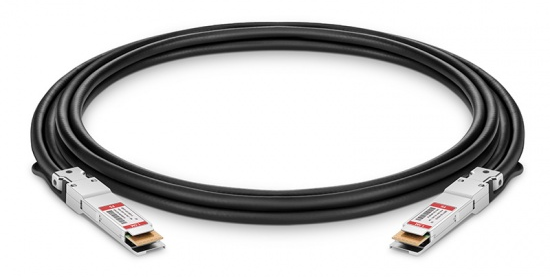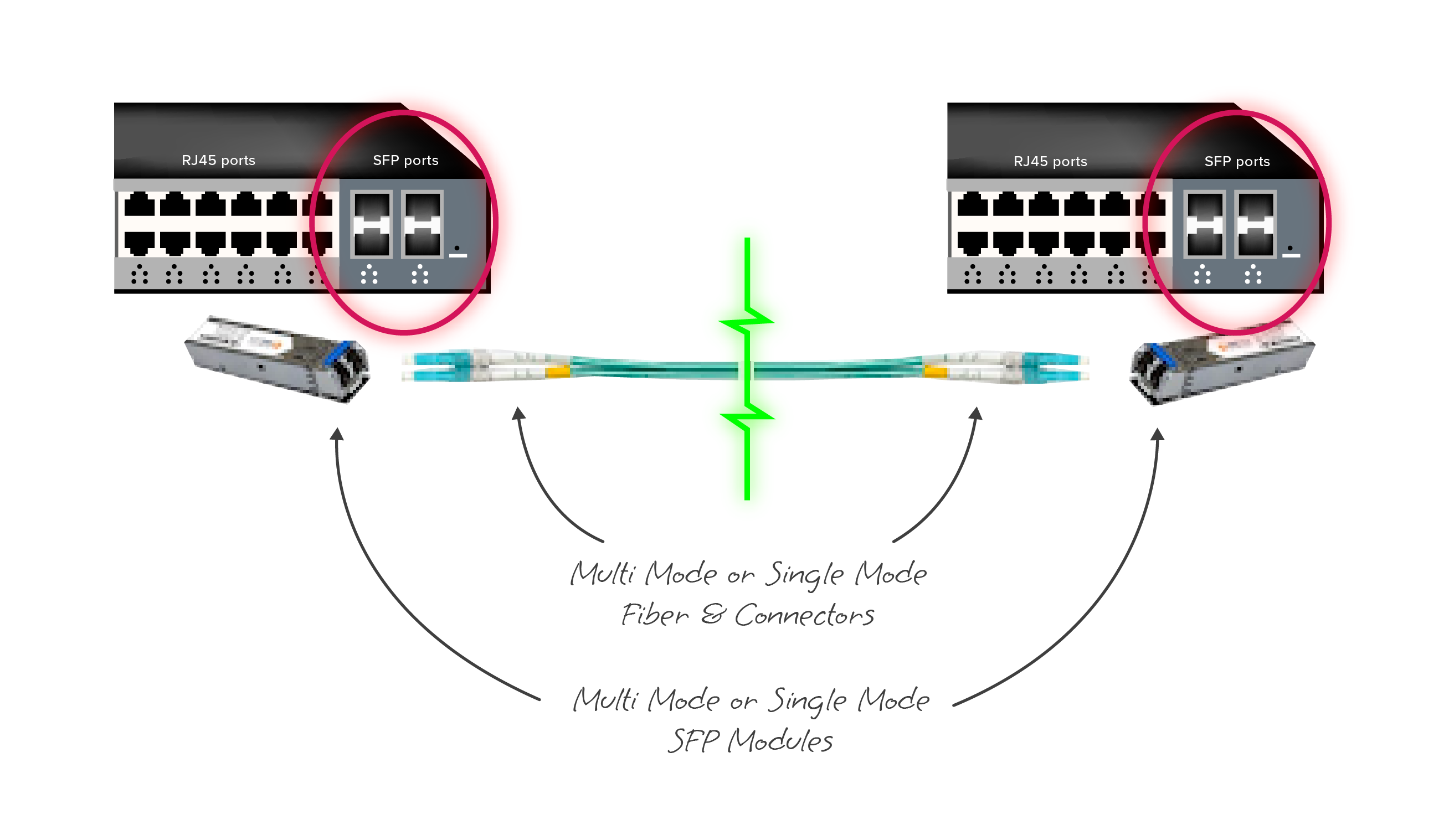
'Transceivers' are known by many names: combination transmitters/receivers, optical transceivers, optics, fiber optic transceivers, Gigabit Interface Converters (GBICS), 'that bit you plug into your fiber port'...Whatever you might call them, when we first introduced the Enterprise 10G load balancer over 10 years ago now it was simple — you had just two options to choose from to serve your load balancer: 1) a short-range transceiver, or 2) a long-range transceiver.
However, over the years we’ve added lots of other options (we were trying to be helpful, honest!) as we flexed to meet a number of varying customer requirements. Hopefully all will be forgiven however, once you read this definitive blog on finding the right transceiver for your load balancer ; ) .
Why do we not include transceivers with our load balancers?
This is because we don't know enough about the specifics of your network to determine which transceiver is the right one for you. This might seem like we're kicking the problem to the customer but we're not (I promise)! We simply don't have sight of the level of detail needed to determine the right optic. And even the people we work with (maybe a procurement team or a reseller for example) also don't tend to know enough about your data center environment to make that decision either. This is why I generally recommend that you buy your transceiver from www.fs.com. Not to be confused with that well-known Big-IP load balancing provider, f5.com ; ) .
The basics: what is a transceiver?
In the load balancer world they are the interface between the fiber cable and network card. They typically look something like this:

But what about Direct Attach Cables (DACs)?
Good question! A Direct Attach Cable (DAC) is where the transceiver and fiber cable come joined together and you can't change the transceiver. These are awesome — if you have a Cisco firewall plugging into a Cisco switch...

But... If you have a load balancer running Mellanox and a Cisco switch, there is a chance it might not be compatible. By using transceivers with traditional fiber cable, it provides far more flexibility for you to be able to deploy your load balancer appliances in any environment.
What transceiver do I need for my load balancer?
Well, this is the fun part...
The specific type of transceiver actually depends on the network card in your load balancer:
| Transceiver Type | Speed | Loadbalancer.org Model / Card | Loadbalancer.org NIC Manufacturer |
| SFP | 1Gb | N/A | N/A |
| SFP+ | 10Gb | Enterprise Flex | Intel |
| SFP28 | 25Gb | Enterprise Flex | Mellanox |
| QSFP+ | 40Gb | Enterprise Flex | Mellanox |
| QSFP28 | 100Gb | Enterprise MAX | Mellanox |
| QSFP56 | 200Gb | If this is the future we will create the Enterprise 200G / 400G | N/A |
| QSFP-DD | 400Gb |
The Enterprise Flex has options
You can choose which network card is included based on your requirements. For example, if you chose the 25Gb Mellanox MCX512A-ACAT option it's backwards compatible to 10Gb SFP+. Or you can have the 40Gb whilst we still have stock.
But wait a minute, Loadbalancer.org has an option for 50Gb cards?!
Absolutely. But the powers that be decided the type of transceiver needed for the Enterprise 50G would be QSFP28. In some ways that makes things easier. But in other ways that further complicates things.
NB. You can however in theory plug a 40G QSFP+ optic into a QSFP28 port if it's supported at both ends i.e. it’s semi-backwards compatible.
What about the switch end…?
So this is where some customers have been caught out.
It's important that you order transceivers that are supported by your switch. In other words, use a Cisco branded/coded transceiver for Cisco with type SFP28 25G, connected to a Mellanox branded/coded transceiver with type SFP28 25G on the load balancer side.
What do you mean by branded/coded for the transceiver?
This is a hangover from the proprietary days when you had to buy the same brand for everything. These days all transceiver optics can usually be coded to match any switch vendor. And a lot of new switches really don't mind what the brand/code is. But as they all cost the same, why not order the right one (just in case!)?
Where do you recommend I buy transceivers from?
Whilst we have no affiliation with them, we have been buying and recommending customers buy transceivers from www.fs.com. They also have fairly responsive technical support (which we all known can be unusual in this day and age!).
Let's walk through an example scenario...
Say you ordered the Enterprise MAX, and you had a switch from Cisco with QSFP28 ports...In this scenario I am going to connect only 1 fibre optic port from the load balancer to the switch.
I need to order:
- 1 x QSFP28 compatible with Mellanox for connecting into the load balancer
- 1 x QSFP28 compatible with Cisco for connecting into the switch
- 1 x fibre optic cable (I recommend reading this fs.com blog on which cable is suitable for you).
Once you have the equipment, plug the transceivers into the right boxes and connect the optic cable, like so:

Simple really. Ok it's not, but you get the idea!
Are any of the transceivers backward compatible?
Yes, kind of. If the form factor is the same, then these days 'yes' you can normally use a lower speed optic of the same form factor i.e. 10G SFP in a 25G SFP28 slot, or even 1G RJ-45 SFP in a 25G SFP28 slot!
But they are definitely not forward compatible. And even with backwards compatibility your mileage may vary with various switch and card vendors.
How do I install a transceiver?
Once you've worked out what you need, and have everything to hand, you then have to install it. I recommend reading this blog on how to install sfp transceivers correctly.
Where can I go to get more information on high performance network load balancing?
Excellent question. Here's a curated list of resources you might find useful:
- How many network ports do you need on a hardware load balancer?
- 10G is dead. Long live 25G!
- What's the best 10G switch upgrade path - 40G or 25G?
Alternatively, if you have a question about the specifics of your set up, our technical team are always here to help.














